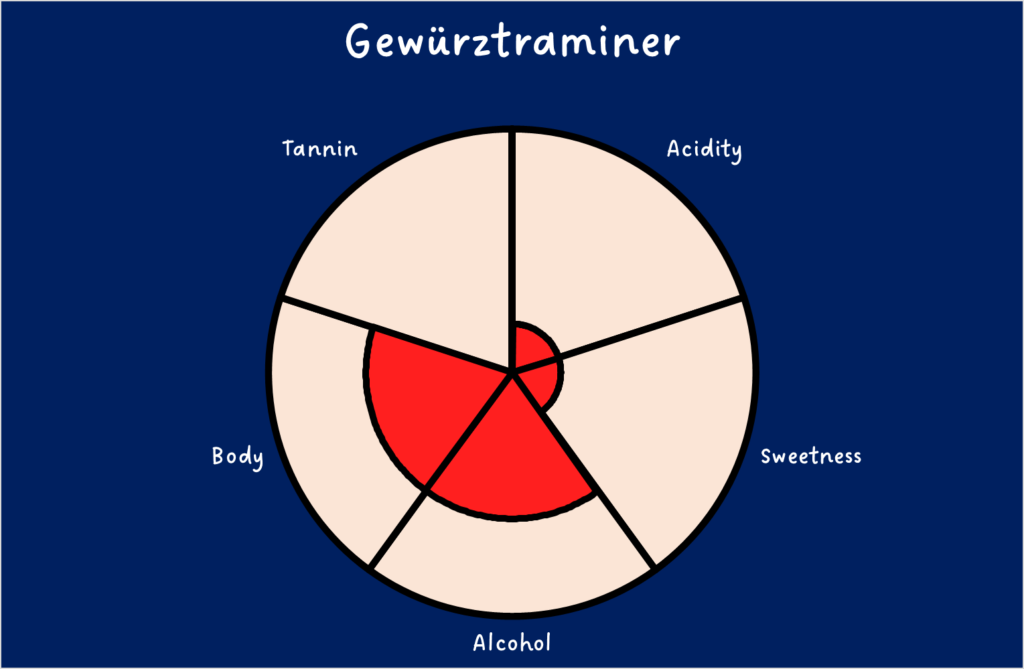
Nearly noble grape varieties: Gewürztraminer
Have you ever smelt rose petals, Turkish delight and lychee in your wine? If you did, you probably had a glass of Gewürztraminer in front of you. And if you did, you could probably smell it from the other side of table! So why does this long named, big nosed, Asian takeaway loving wine deserve nearly noble status? I’m glad you asked!
About the grape
This aromatic, cool climate, pinkish coloured grape, is early budding, late ripening and has high natural levels of sugar. In the right conditions it can grow vigorously, but it is also susceptible to a variety of diseases. It tends to be a little fussy about chalky soils, preferring instead some clay soils. If harvested too early it may have depleted levels of acidity.
Why does it deserve its nearly noble status?
Longevity – The earliest records show that the grape was around as early as the 11th Century and it has survived 1000 plus years.
Distinctiveness – The flavour profile of this grape is unique. Its Turkish delight give away smell with lychee flavours mean it is unlike any other wine. Its pinkish skin means the wines are more deeply coloured than most white wines as well.
Versatility – The natural sugars in this grape mean it is very easily suited to sweet wine making. Examples are made from late harvest grapes and those affected with noble rot. It of course makes great dry wines as well.
Neither red or white – This is one of the few actual pink grapes. As such it shares a number of characteristics with red grape varieties, but also makes excellent white wines. Confusingly wines made with skin contact are still orange wines though, not rosé ones!
Profile
This is an aromatic grape, so has strong floral notes. When made it a dry style it will typically have:
- Low in acidity.
- Dry in style.
- Medium in alcohol.
- Medium to full bodied.
- Low tannins.

Typical aromas / flavours include: Rose petal, peach, lychee, grapefruit, tangerine, mango, ginger, cinnamon, honey, dried fruits and bacon fat. This wine loves a takeaway – think Indian curry, spicy Chinese dishes. It also pairs nicely with Moroccan spices – think Tagine, spiced couscous dishes, etc… But it it also a great partner to stronger cheeses.
In sweeter wines aromas / flavours similar characters to those above, plus those of date, iodine, and vegetal notes, with layered complexity. These wines pair well with fruit deserts.
Production
Contrary to what you may think, Germany is not the main producer of this wine. It is in fact, Argentina, followed by Italy and the United States. Plantations can be found across Eastern Europe (Ukraine, Bulgaria, the Czech Republic, etc…), Australia and Canada. Germany actually produces a very small amount of this variety, as does France in the Alsace region.
You’ll like like Gewürztraminer if you like…
Muscat Blanc, Cserszegi fűszeres, Torrontes.
So what do you think is this long named, stinky, takeaway loving variety on your list of must try wines? Have you already discovered it? If so, could you identify the Turkish delight aromas? I’d love to hear how you found this grape. You can always drop me a line and let me know. In the meantime, keep exploring this beautiful planet we live on, one glass at a time!